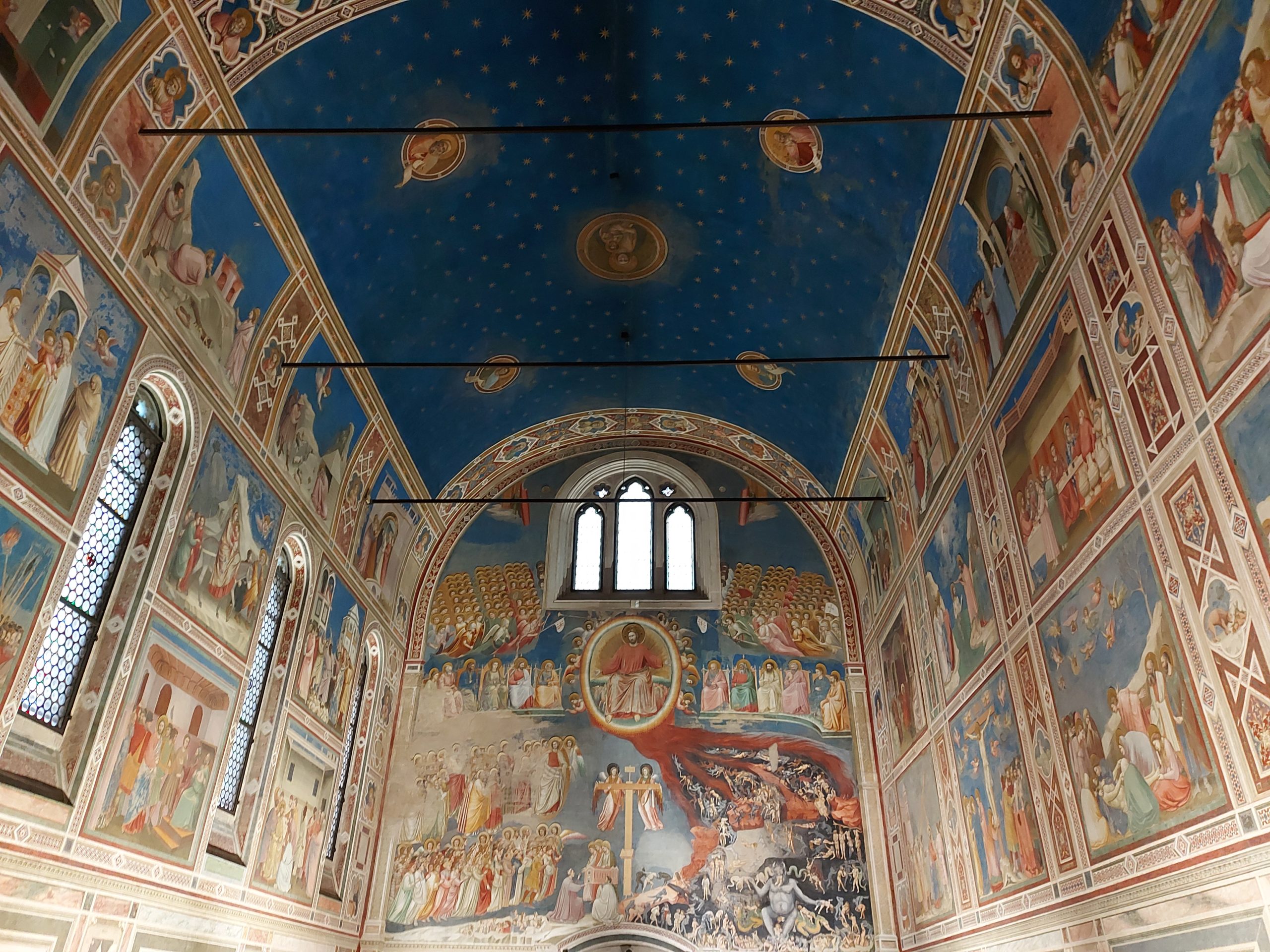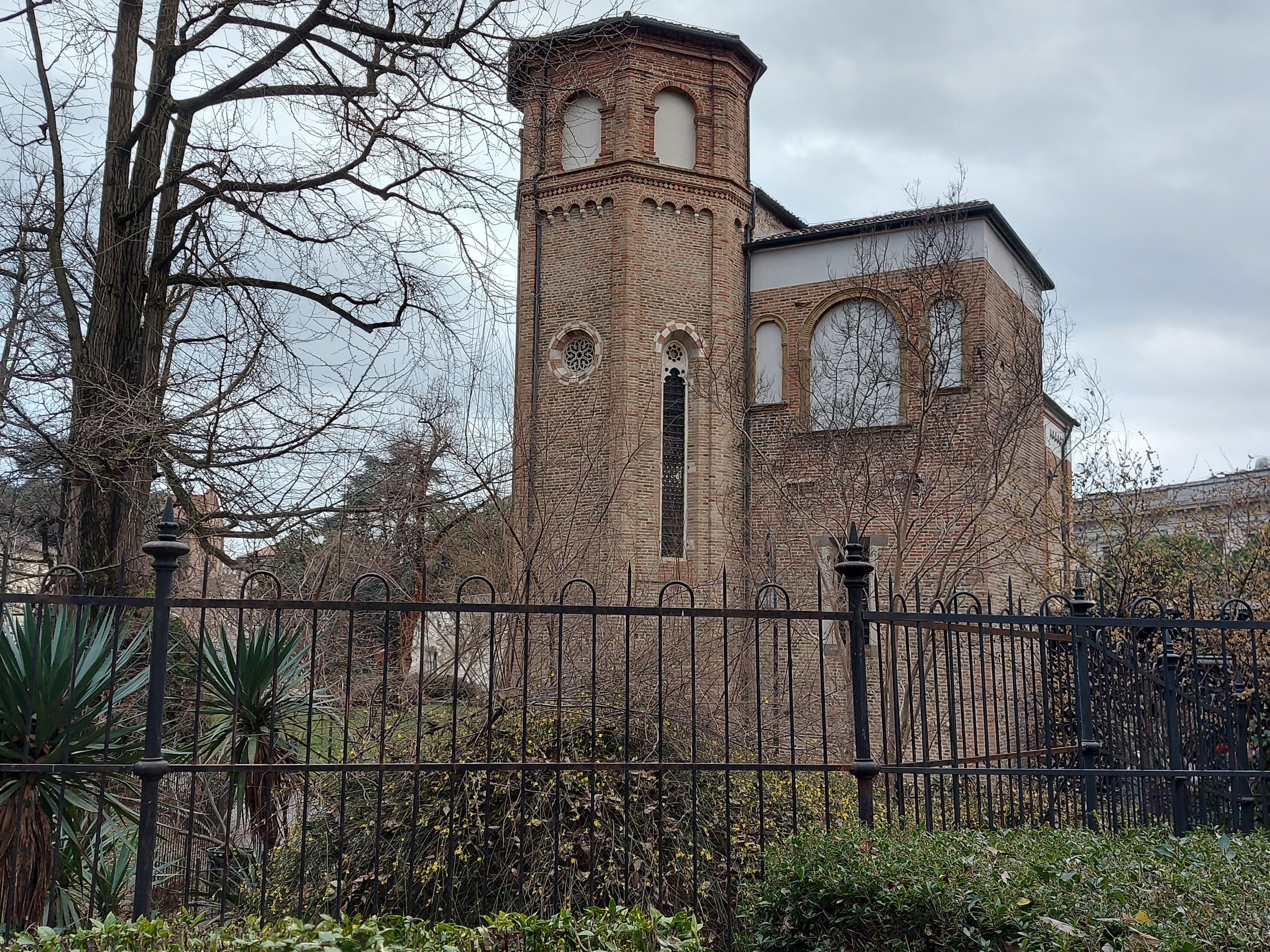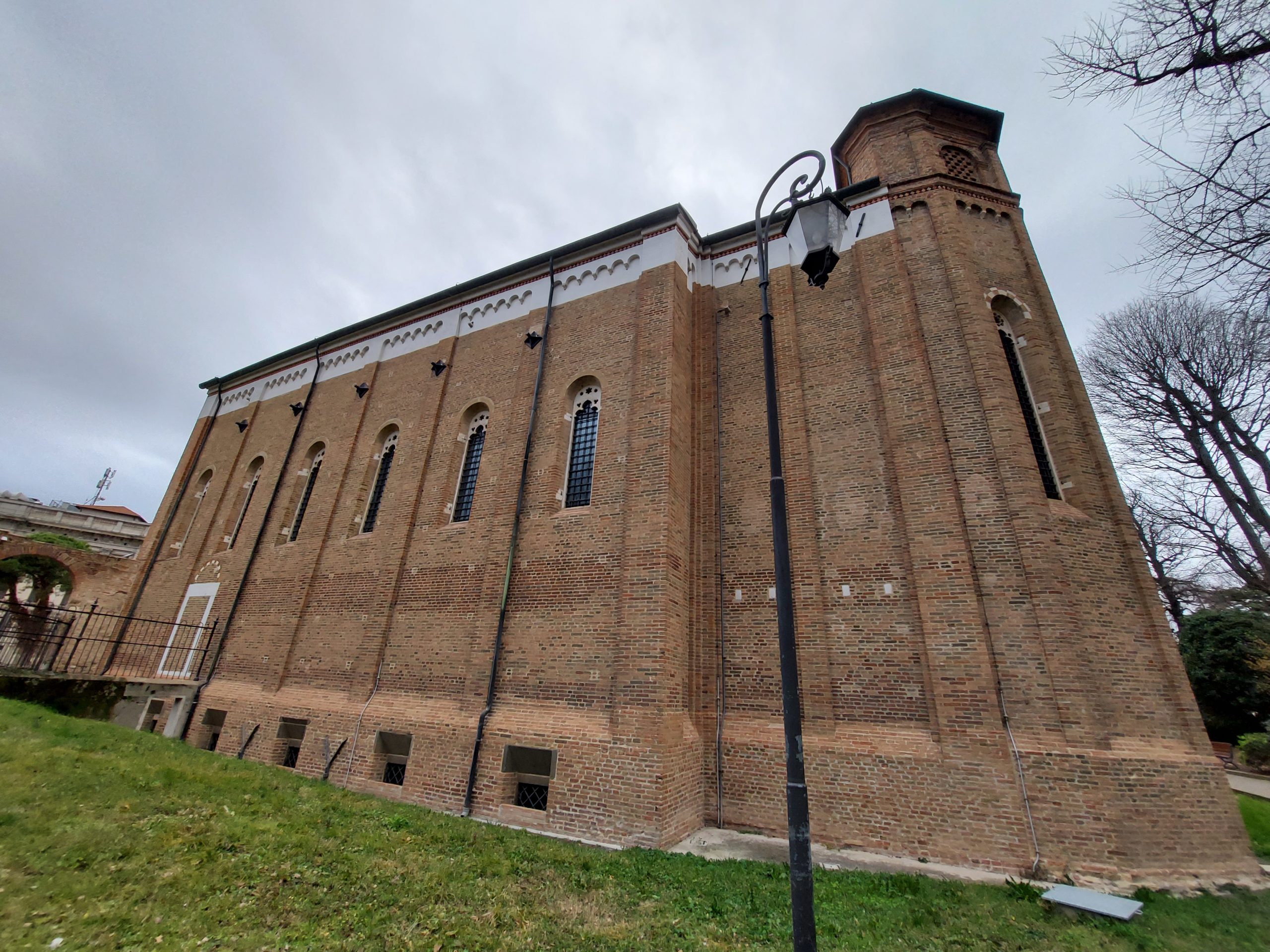Medieval splendor: Giotto’s masterpiece in Padova’s Scrovegni Chapel
I was in Padova for a few weekends last month, and managed to book tickets to the spectacular Scrovegni Chapel, with its fourteenth century frescoes by Giotto. This is a not-to-be-missed monument when you are next in Padova.
In order to protect the delicate frescoes, numbers are limited, so be sure to book those tickets in advanance.
The Scrovegni Chapel is right in the center of historic Padova.
The chapel was built on land bought in 1300 Enrico Scrovegni, a wealthy banker from Padova. It was planned as the Scrovegni family chapel and burial place, but Scrovegni’s plan – received through a concession by Pope Benedict XI – was to also open the chapel to the public. He commissioned Giotto di Bondone (1267-1337) to paint the chapel frescoes.
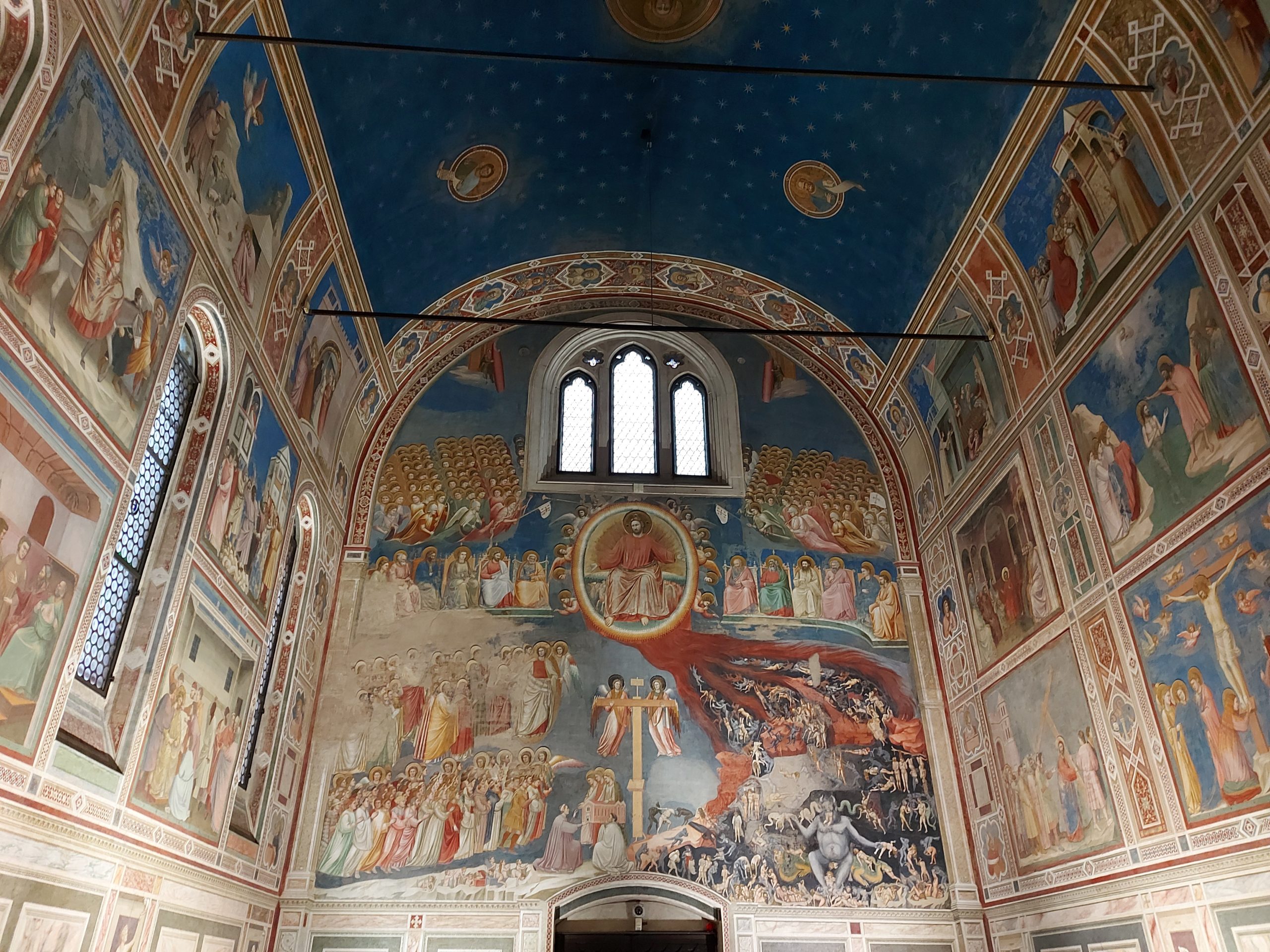
Giotto’s frescoes and the Scrovegni Chapel were named a UNESCO World Heritage site in 2021.
Giotto and his assistants (believed to have numbered around forty) painted this cycle of frescoes beween 1303-1305. The work itself was unveiled at the inauguration of 25 March 1305.
The 37 scenes that make up this cycle of frescoes are spectacular, and clearly illustrate how rich and nuanced late medieval art could be, and the influence it had on later Renaissance artists.
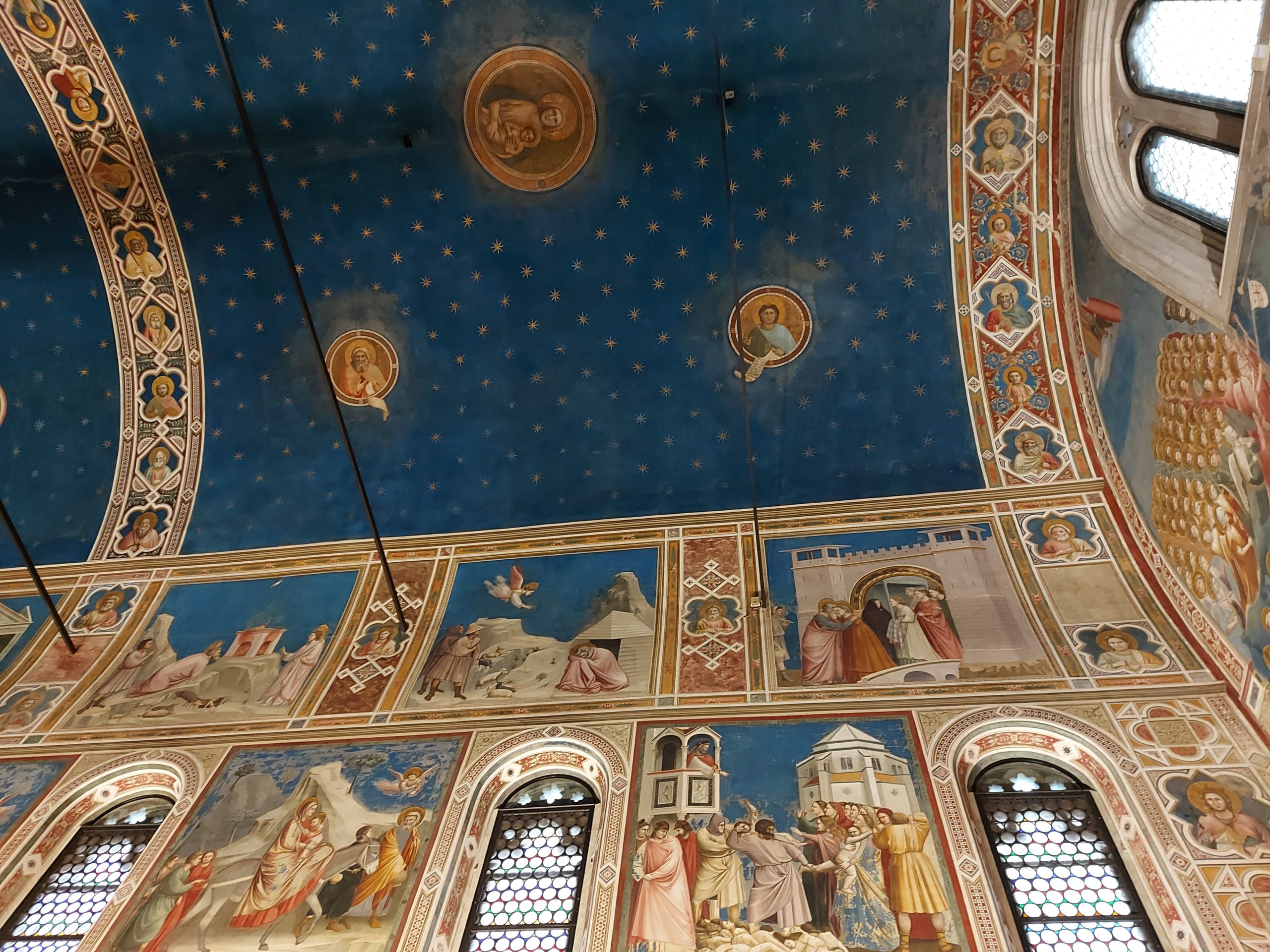
While there is quite a bit of damage, it is still in excellent condition and new technology and limited visitors allows for better preservation.
The colors are still brilliant, with rich details in each biblical scene. Giotto created many fine works during his lifetime, but the Scrovegni Chapel is his greatest masterpiece.
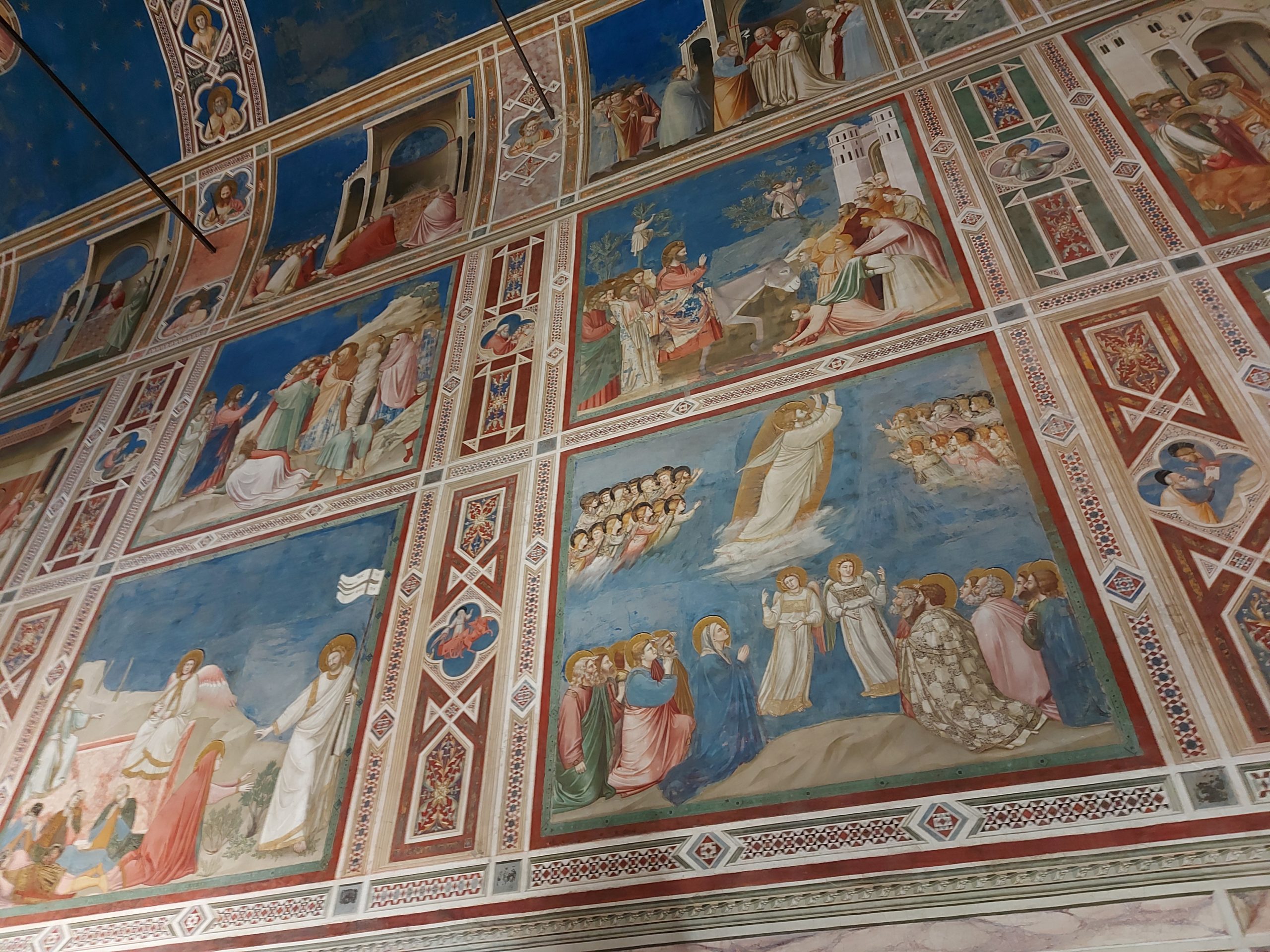
The Crucifiction is a powerful scene, with a clear division into two groups of those mourning on the left, and the soldiers on the right. Mary Magdalene cleans Jesus’ feet with her long, red hair, while Mary looks on in pain.
The angels hold the holy grails to capture the drops of Christ’s blood of Christ. To the right, a halo appears behind the head of a Roman centurion who, in witnessing the death, has understood his error and has now accepted Jesus as the son of God.
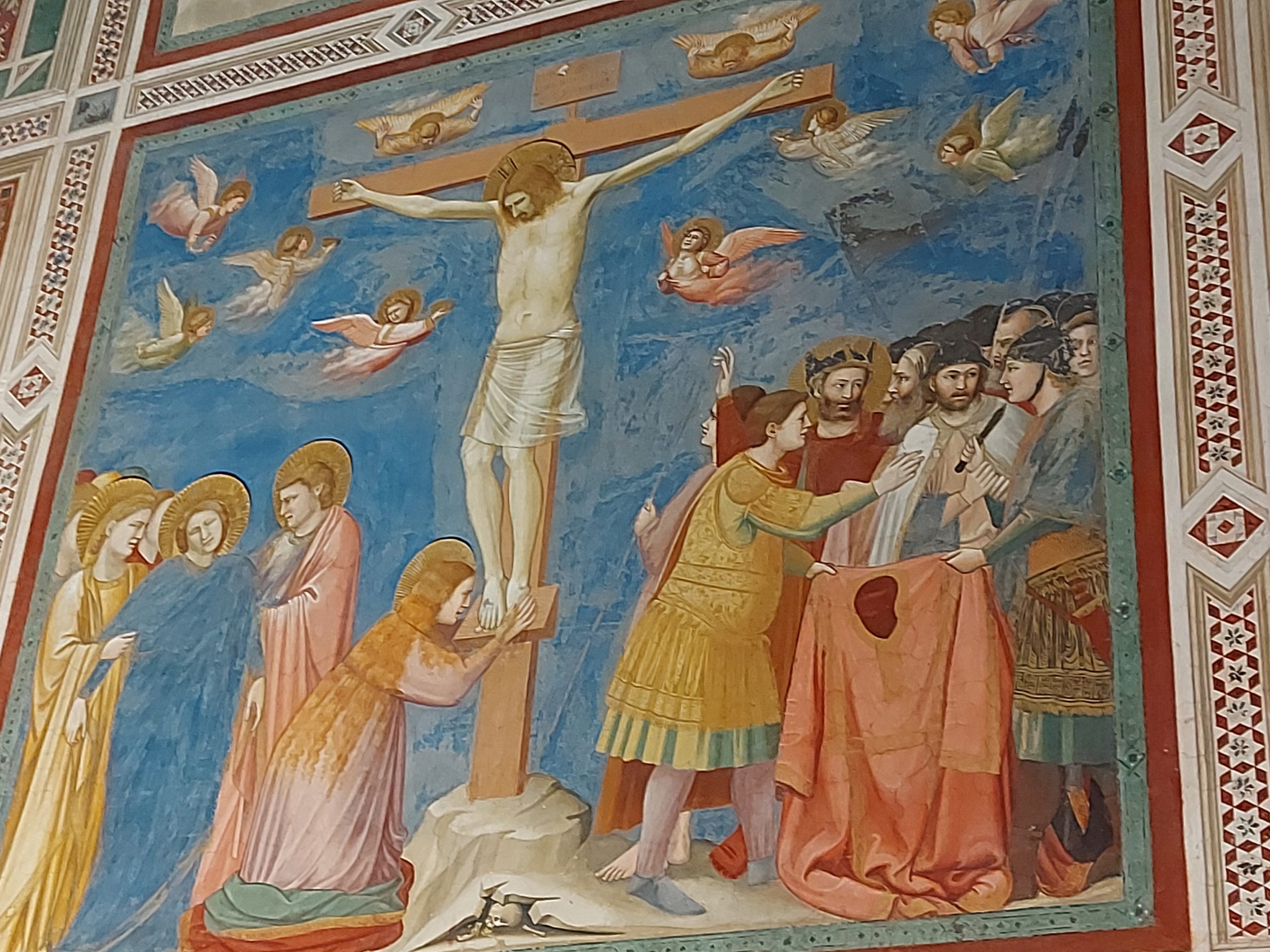 Last Judgement frescoes are often my favorite – and especially the scenes from Hell. When we were in medieval churches, my children always knew we were going to check out the ingenuous ways to illustrate how then damned would be tortured for eternity.
Last Judgement frescoes are often my favorite – and especially the scenes from Hell. When we were in medieval churches, my children always knew we were going to check out the ingenuous ways to illustrate how then damned would be tortured for eternity.
Giotto’s own Last Judgement does not disappoint. The damned are tortured by demons and monsters, hanged, disemboweled, consumed by flames, writhing in misery. and devoured by an enormous Lucifer.
In an era of indulgences, there is also criticism at the corruption of the church. To thne left of the giant Lucifer, you can see a member of the clergy, seated on the back of a devil. He is wearing a white bishop’s hat and offering a benediction to a parishioner, while accepting a bag of coins. Other clergy members and wealthy noblemen are depicted among the damned in this fresco – a reminder that, weak or powerful, judgement comes for all.
Dante himself came to visit Giotto at the chapel as he was creating his work.
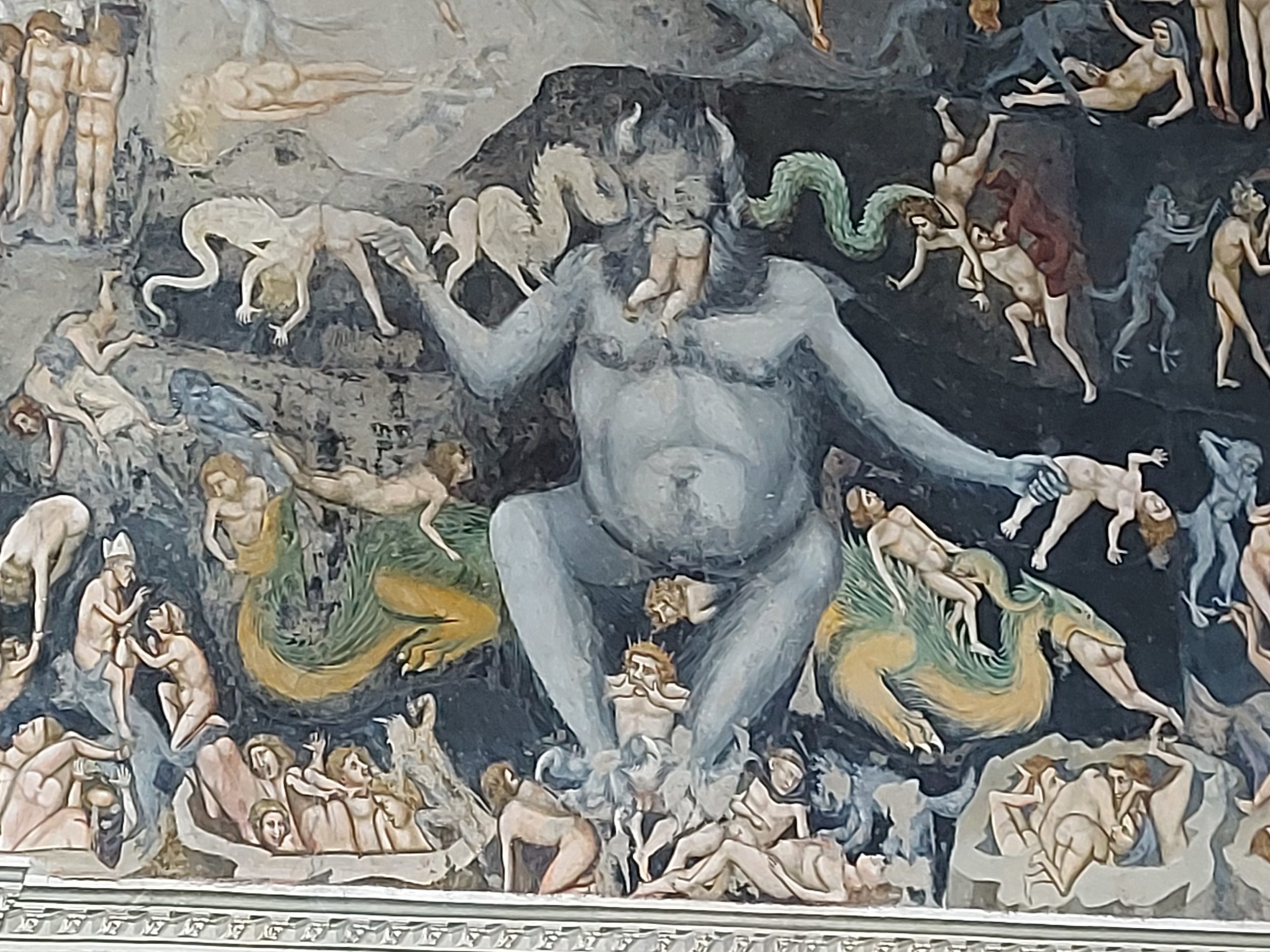
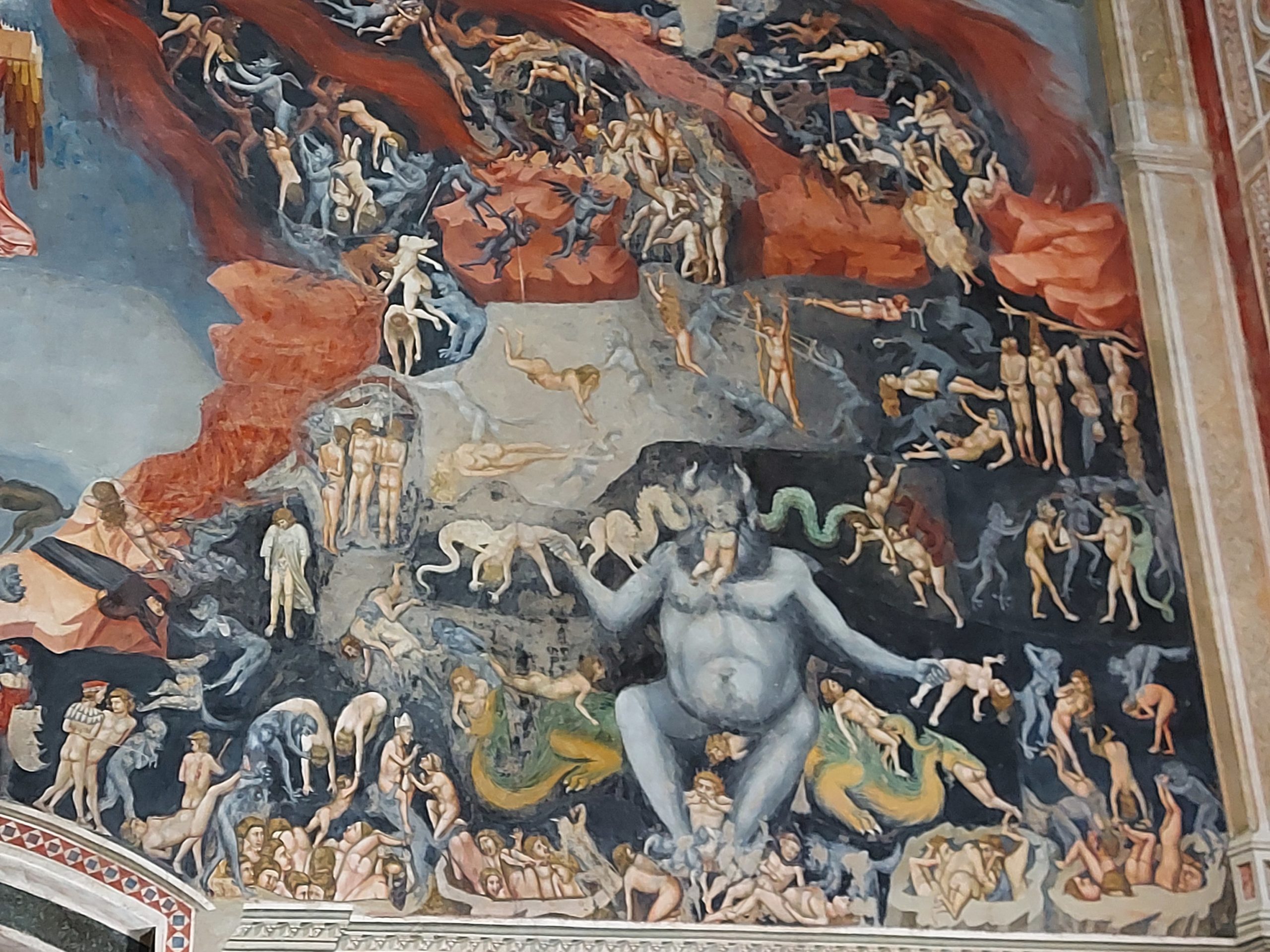
Make sure to book your tickets to see this masterpiece of medieval art when you are next in Padova.
